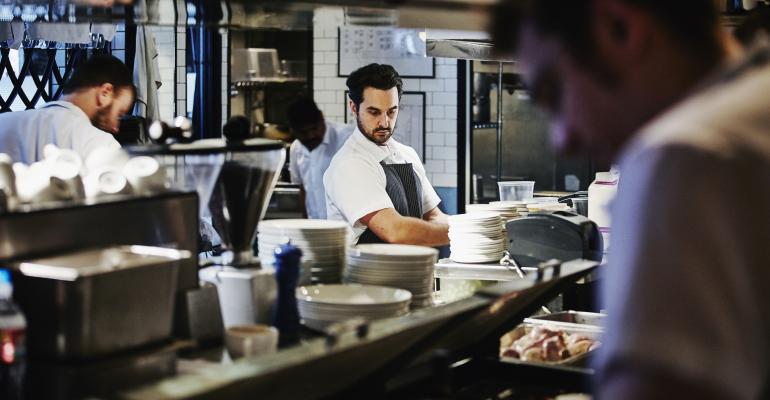Labor remains a major challenge for restaurant operators, not only the rising cost of paying them, but also just finding people to fill vacant spots, especially in the back-of-the-house, and especially for independent operators, according to research from Nation’s Restaurants News.
In its inaugural State of Independent Restaurants report, NRN found that 41% of independent operators said staffing their kitchen was a major labor challenge, significantly higher than chain restaurant operators, 27% of whom reported similar challenges.
The difficulties are even more widespread among full-service respondents, 44% of whom said recruiting for the back-of-the-house was a problem — twice that of limited-service operators.
“We recently lost our sous chef and we haven’t been able to replace him,” said Regina Migliucci-Delfino, owner of Mario’s Restaurant in the Little Italy section of the Bronx in New York City.
“It’s been very, very difficult,” she said. “The people that come in say they have experience, and when they come in they can’t do what they said they could do. And everybody wants to get paid top dollar.”
Keeping good staff is hard, too, she said.
“After COVID we hired a woman who was great, but she left because she wanted to experience different types of cuisine,” Migliucci-Delfino said.
Domenico Sacramone, owner of Sac’s Place, a longstanding Italian restaurant in the New York City neighborhood of Astoria, in Queens, said the key to retaining staff is to be straightforward with them and manage their expectations, and also to listen to their needs.
“When I hire them, I tell them what’s expected, and if they’re a good employee I’ll always be willing to work with them,” he said, adding that some of his back-of-the-house has been with him for more than 30 years.
“When it’s not busy I expect them to clean a little bit, but if they’re sitting down on the phone for five minutes I’m not going to have a fit.”
Compensation requires a bit of give-and-take, he said.
“Whenever it’s time to negotiate a raise or something, I'm always willing to work with them, even in bad times. I treat them as equals. We're very kind here. We're not pushovers, but we like to do what's fair.”
As the cost of everything has gone up and margins are down, Sacramone has figured out different ways to help his kitchen staff make extra income. For example, although New York State, as with many states that allow tip credits, doesn’t allow the sharing of tips with the back-of-the-house, he has changed the contracts for large parties so that instead of charging a 20% gratuity, he charges a 15% gratuity and a 5% “service” charge that goes to the kitchen staff.
“That was a nice compromise,” he said. “They're happy and we're happy to help … These people have been loyal to me for years and I need to be loyal to them.”
Eddy Escriba and Takara Hein, chefs and owners of Oaxaca Club, which opened in Jacksonville Beach, Fla., last year, have managed to keep most of their staff since opening by adjusting to the cultural shift that is happening at many restaurants.
“I think one of the biggest reasons is the way we built the culture of the restaurant,” Hein said. “It’s really just showing empathy, kindness, and hospitality not just to the guests, but to our purveyors, our staff, and each other, and building that kind of relationship on a daily basis.”
That includes frequent meetings with managers to talk about good leadership tactics, “but really it just comes down to taking the time to have conversations with the guys in the kitchen, to know my staff, and having the empathy to work with them if there’s an issue going on outside of work,” she said. “It really goes a long way with people.”
Escriba, a 30-year veteran of the foodservice industry, said restaurant workers weren’t treaded like that when he started.
“When I was a young chef, I got yelled at. The culture in the kitchen was not great, but as young chefs we thrived on that energy and that pressure cooker of an environment,” he said. “But it wasn’t good. I had some really awful chefs that I worked for and I have made sure I don’t become that. I don’t want to be that chef who people are scared to approach and ask for help. Over the years we’ve changed some of that culture.”
He said during team meetings he reinforces the fact that they have each other’s back.
“We care for our staff in every aspect of our restaurant life, and sometimes that spills over to personal life,” he said.
Escriba and Hein agreed with Sacramone that clear communication about expectations is crucial, as is setting them up for success.
“Our staff recognizes when they come to work, they know that we're going to have a pre-shift meeting every single day, go over some points, go over menus, go over reservations,” Escriba said. “We’re giving them the tools for daily operations so they’re well prepared. I think they appreciate that.”
Check out more from this package here:
Dissecting the challenges of restaurant menu innovation in 2024
How restaurant operators balance food costs and pricing amid inflation
How independent restaurant operators can improve their marketing
Contact Bret Thorn at [email protected]





